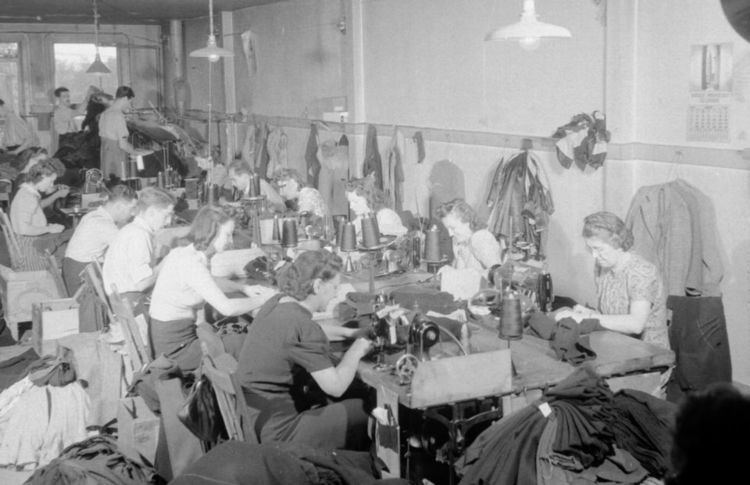 | ||
Clothing industry or garment industry summarizes the types of trade and industry along the production and life chain of clothing and garments, starting with the textile industry (producers of cotton, wool, fur, and synthetic fibre) via fashion industry to fashion retailers up to trade with second-hand clothes and textile recycling. The producing sectors build upon a wealth of clothing technology some of which, like the loom, the cotton gin, and the sewing machine heralded industrialization not only of the previous textile manufacturing practices.
Contents
Terminology
There are considerable overlaps between the terms clothing-/garment-, textile- and fashion industry. The clothing sector is concerned with all types of clothes, from fashion to uniforms, e-textiles and workwear. Textile industry is less concerned with the fashion aspect but produces the fabrics and fibres that are required for tailoring. The fashion industry closely follows - and sets - fashion trends to always supply the latest in non-functional clothing.
Production
By the early 20th century, the industry in the developed world often involved immigrants in "sweat shops", which were usually legal but were sometimes illegally operated. They employed people in crowded conditions, working manual sewing machines, and being paid less than a living wage. This trend worsened due to attempts to protect existing industries which were being challenged by developing countries in South East Asia, the Indian subcontinent and Central America. Although globalization saw the manufacturing largely outsourced to overseas labor markets, there has been a trend for the areas historically associated with the trade to shift focus to the more white collar associated industries of fashion design, fashion modeling and retail. Areas historically involved heavily in the "rag trade" include London and Milan in Europe, and the SoHo district in New York City.
The garment industry is a major contributor to the economies of many countries. The industry for Ready Made Garments has been criticized by labor advocates for the use of sweatshops, piece work and child labor.
Working conditions in low-cost countries have received critical media coverage, especially in the aftermath of large scale disasters like the 2013 Savar building collapse or the Triangle Shirtwaist Factory fire.
